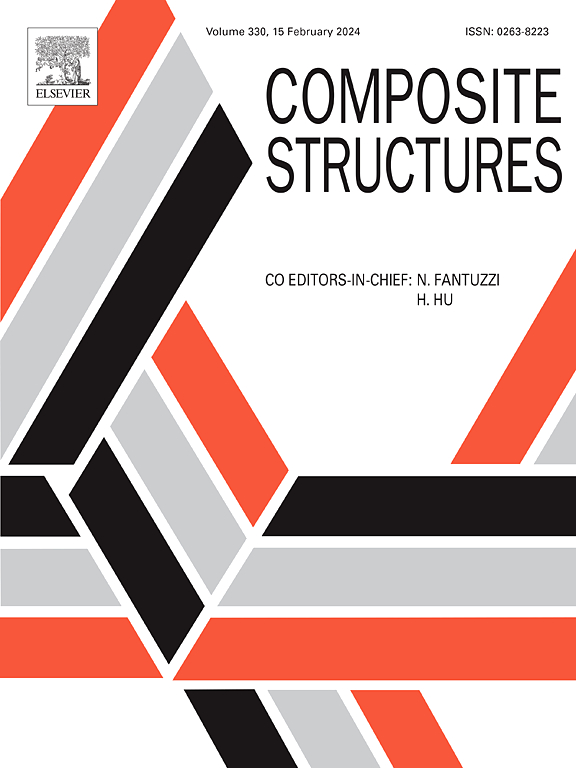Effects of multi-field coupled curing process on mechanical performance of CFRP composites under three-point bending
IF 6.3
2区 材料科学
Q1 MATERIALS SCIENCE, COMPOSITES
引用次数: 0
Abstract
Curing-induced residual stresses (CRS) inevitably produce during the curing process and finally influence the serviceability of carbon fiber reinforced polymer (CFRP) composites. This work develops a comprehensive computational framework to investigate the effects of CRS on mechanical performance of composites under three-point bending. The CRS are obtained from the multi-field coupled curing process model and are introduced as initial prestresses into the progressive damage model to reveal the subsequent loading process. The damage results are found to be consistent with the experimental results captured by digital image correlation (DIC) and super depth of field microscope. Furthermore, the layup effects of composites including cross-ply layup and unidirectional layup are studied to validate the applicability of this framework. It is shown that the CRS significantly affect the damage evolution, failure modes and deformation of cross-ply composites. The results provide new insights into layup optimization for the improvement of mechanical performance.
多场耦合固化工艺对CFRP复合材料三点弯曲力学性能的影响
固化残余应力(CRS)是碳纤维增强聚合物(CFRP)复合材料在固化过程中不可避免地产生的,并最终影响其使用性能。本工作开发了一个全面的计算框架来研究三点弯曲下CRS对复合材料力学性能的影响。从多场耦合固化过程模型中得到CRS,并将其作为初始预应力引入到渐进损伤模型中,以揭示后续加载过程。损伤结果与数字图像相关(DIC)和超景深显微镜捕获的实验结果一致。此外,还研究了复合材料交叉铺层和单向铺层的铺层效果,验证了该框架的适用性。结果表明,CRS对复合材料的损伤演化、破坏模式和变形有显著影响。研究结果为提高复合材料的力学性能提供了新的思路。
本文章由计算机程序翻译,如有差异,请以英文原文为准。
求助全文
约1分钟内获得全文
求助全文
来源期刊

Composite Structures
工程技术-材料科学:复合
CiteScore
12.00
自引率
12.70%
发文量
1246
审稿时长
78 days
期刊介绍:
The past few decades have seen outstanding advances in the use of composite materials in structural applications. There can be little doubt that, within engineering circles, composites have revolutionised traditional design concepts and made possible an unparalleled range of new and exciting possibilities as viable materials for construction. Composite Structures, an International Journal, disseminates knowledge between users, manufacturers, designers and researchers involved in structures or structural components manufactured using composite materials.
The journal publishes papers which contribute to knowledge in the use of composite materials in engineering structures. Papers deal with design, research and development studies, experimental investigations, theoretical analysis and fabrication techniques relevant to the application of composites in load-bearing components for assemblies, ranging from individual components such as plates and shells to complete composite structures.
 求助内容:
求助内容: 应助结果提醒方式:
应助结果提醒方式:


